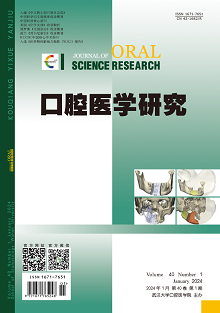|
|
Clinical Analysis of Different Types of Tracheal Cannulas Combined with Self-made Blockage Tubes for Postoperative Complications after Tracheotomy
LI Shensui, TIAN Xudong, WANG Weili, TANG Zhenglong
2024, 40(1):
35-39.
DOI: 10.13701/j.cnki.kqyxyj.2024.01.007
Objective: To explore the clinical analysis of complications after gas resection in oral and maxillofacial patients using a combination of balloon cannula, metal tracheal cannula, and self-made blockage tube. Methods: The study subjects selected 100 patients who underwent oral and maxillofacial tracheostomy at the Affiliated Stomatological Hospital of Guizhou Medical University from June 2020 to August 2023, and conducted a retrospective analysis of their clinical data. The patients were randomly divided into a group with airbag cannula (47 cases) and a group with airbag cannula and metal cannula (53 cases). Both groups were combined with self-made cannulas. Clinical data, hospitalization time, clinical analysis, treatment methods, pathogenic bacteria of postoperative complications and pneumonia, and relevant factors for pneumonia after gas resection were analyzed. Results: After tracheotomy, the incidence of postoperative pneumonia was 36.00%. Compared with the airbag+metal group, the incidence rate of the airbag group was 2.12% (P<0.001), the incidence of bleeding was 1%, and subcutaneous emphysema was 1%. The airbag group did not experience tube detachment, while the incidence of tube detachment in the airbag+metal group was 20%. All patients did not experience breathing difficulties, difficulty in extubation, or tracheoesophageal fistula. In addition, the results of univariate analysis showed that patients with smoking history, and drinking history had a higher incidence of pneumonia after tracheotomy, which was statistically significant (P<0.05). Logistic regression analysis found that the duration of tracheal cannula removal and the type of tracheal cannula were comprehensive risk factors for pneumonia after gas resection (OR=0.021, 95%CI:0.002-0.19, P<0.001). Conclusion: After tracheotomy in oral and maxillofacial patients, the routine use of balloon cannula combined with self-made blockage tube can reduce patient hospitalization time, postoperative complications, and the occurrence of pneumonia.
References |
Related Articles |
Metrics
|

